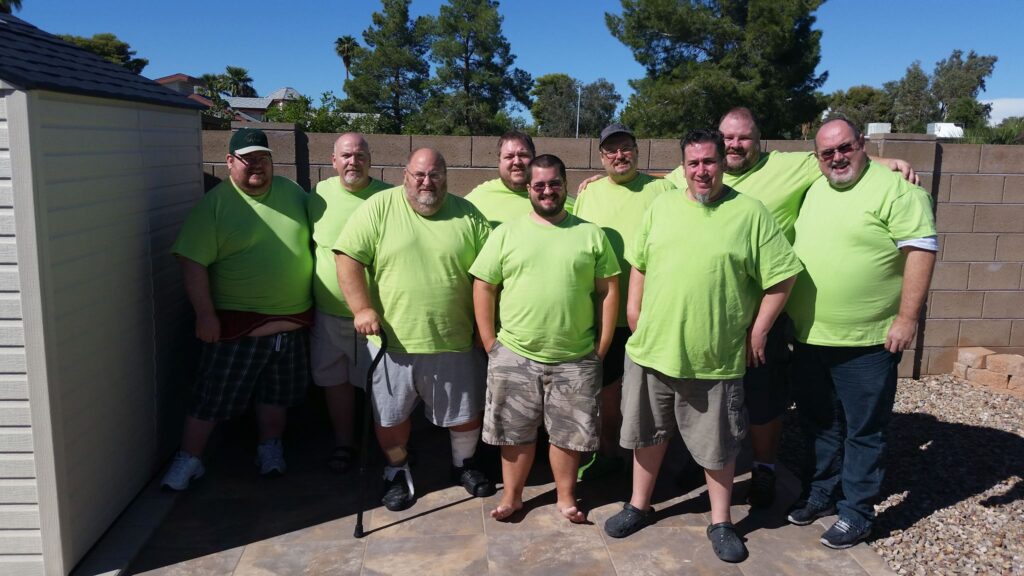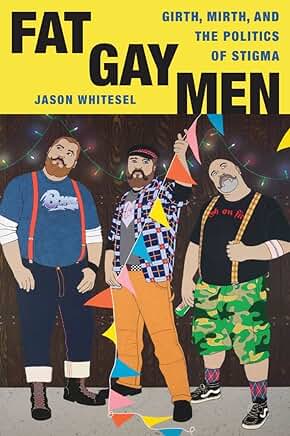
Bear Tracks: Fat Bears & the History of Girth and Mirth
Historically, gay men have stigmatized other gay men for being ugly, being old, having a small cock, or being fat. The shame of such stigma often forced some gay men to keep a low profile or remain out of sight in the gay community. Who wants to be called an “old queen” or a “fat pig,” especially to their face?
Girth and Mirth predates the rise of the new sex-positive gay bears by a decade. However, bears did not originate in the Girth and Mirth scene, as some academics have alleged. In a 1999 interview with Ron Suresha, Reed Wilgoren recounts how his friend Charlie Brown had placed an ad in the Berkeley Barb (a beacon for gay voices in the 1970s) in 1976 called “Chubbies and Chasers, Unite!” The very positive response was overwhelming. This incentivized Charlie to found the first Girth and Mirth Club in San Francisco in 1976. This became a sex-positive, body-affirming, mutually supportive organized social group. The next year a Girth and Mirth chapter was stared in Boston, and then another chapter in New York City in 1978.
Prior to this time one way individuals with special interests found each other in the days before the Internet was through private mailing lists. Someone would collect names and addresses, compile a list and circulate it privately among interested parties. As an isolated teenager in the 1960s I had stumbled upon these lists in my search for pen pals, fellow stamp collectors and fellow postcard collectors. In the 1970s this method was common among certain likeminded gay men with specialized sexual tastes. (I found my way to the “hirsute” tribe this way.) Heavyset gay men (“chubs”) formed casual social networks this way.

Girth and Mirth organized gatherings and soon collaborated with the national Affiliated Bigmen’s Club to hold the first Convergence in 1986. As Jason Whitesell wrote in 2014, “Convergence is foremost a group vacation and continues to rely on the presence of a gay social scene in large and diverse host cities to provide the itinerary for its excursions.” In more recent years another big men’s annual event–Super Weekend—has been held at the Cabana Inn, the largest gay resort in the American Southwest. As Convergence has grown more elaborate and expensive a socioeconomic rift has surfaced, with less well-heeled men understandably grousing about class discrimination and gong to the less expensive Super Weekend. A similar class difference has led bears unable to afford Provincetown Bear Weekend to go to summer bear weekends at Hillside Campgrounds in northern Pennsylvania.
In the 1990s the Girth and Mirth community overlapped and intermingled with the new bear community. Three snapshots from this time: I saw chubs showing up and being welcomed at Bear Hug sex parties in San Francisco. As Girth and Mirth was waning in Boston, Bill Sanderson founded the New England Bears, which breathed new life into the local fat bear scene. When the first bear club was formed in New York City a long-time chubby bear friend and fuck buddy of mine and his husband reported they were shunned by this new club. Discouraged by this, they withdrew from the bear community.

Much has changed over the last 25 years. There has been a broader societal shift in the United States toward addressing fatphobia. The first wave of the fat acceptance movement—
“Fat Liberation”– began in 1967, focusing from the start on a feminist model of patriarchal oppression, for example, the dieting culture pressuring women to be slim. In 1979 Carole Shaw launched Big Beautiful Women, a fashion and lifestyle magazine. From the start fat acceptance advocates have addressed aesthetic, legal, and medical dynamics.
The 1980s and 1990s second wave saw the fat acceptance movement spread to other countries, an increase in activist organizations, publications, and conferences, and their positions and findings being incorporated into research in the medical professions. Girth and Mirth and gay bears emerged during this time.
The current third wave has become intersectional, addressing issues of race, class, and sexuality. Gay chubs and bears remain doubly stigmatized—for their large body size and the homophobic judgment that gay men are “feminine.” While lesbians have historically politicized fat issues, gay men have sexualized and fetishized it. Fat studies has even become a formal academic discipline. With the publication of his 2014 ethnographic study Fat Gay Men: Girth, Mirth, and the Politics of Stigma Jason Whitesel was proclaimed a “leading star” in this new academic field.
Size discrimination is being increasingly addressed in the arts. James Unsworth, an artist and gay historian of Girth and Mirth and bear culture, exhibited his “Girth and Mirth” artwork at Abject Gallery in Sunderland, England (near Durham on the North Sea coast) in 2018. His pieces are collages of photographs from erotic magazines of heavyset gay men overlaid with fruit and flower imagery. (I recently posted two pieces from this show on my Facebook page, only to find myself in Facebook jail for posting “pornography.”)
Currently there is a division within the movement as well over whether obesity should be classified as a disability. The medical community continues to criticize the fat acceptance movement for “promoting a lifestyle that can have dire health consequence.” Heterosexual sex could also be regarded as such a lifestyle—it sometimes results in pregnancies that jeopardize the life of the mother. Even as fat bears have become more visible in the bear community, the stigma lingers. Some gay men outside the bear community assert that “bear” is a euphemism for “fat.” Fat bears even continue to be shamed and rejected by some fellow bears. However, the fat acceptance movement continues to make progress. A clear sign of this has been in the inclusion of “plus-sized” people in advertising, showing them as healthy, fit, and sexually desirable. As the old adage goes, truly “beauty is in the eye of the beholder.”










Muy interesante